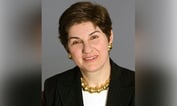The hottest soap opera of the new fall season isn’t on TV.
Bond behemoth PIMCO is down 14% in recent months as talk of Federal Reserve tapering continues to frighten markets, and the slow-slide saga of the Newport Beach, Calif.-based firm shows little signs of easing. Whether it can recover in fixed income or will focus on a completely different asset class like alternative investments is yet to be seen. But for PIMCO’s investors, the drama is far from make believe.
Gross told Bloomberg Surveillance host Tom Keene on Friday that despite the stress, he’s still having fun.
“Well, to me fun is characterized by challenge and competition,” Gross said. “And certainly this market is challenging money managers, certainly bond managers in ways that they have never been challenged before. So to the extent that you want to play in the Super Bowl and to the extent that you want to be in the big time with a big-time challenge, this is the time to play and I’m excited to do it.”
Gross on Friday’s jobs report being the new normal:
“Yes, it sure was. And I guess the revision of last month was the biggest shocker. And the fall, of course, as you mentioned in terms of the participation rate from 63.4[%] to 63.2[%]. You know, the unemployment rate is down; for those that focus on the unemployment rate, it is 7.3%. They would simply suggest we are closer to tapering and closer to a fed funds increase at some point. But I would suggest otherwise, that it is really a weaker economy as evidenced by today’s report.”
On whether the Fed will taper Sept. 18:
“Yes, perhaps. I think they will. You know, much like the red line in Syria, I think Bernanke and company are committed to a taper and the sooner the better. The taper is really a factor not necessarily of the growth or the strength of the economy, but the fact that at some point, three to six months ago, [Fed] Governor [Jeremy] Stein, for instance, wrote about the impact that tapering and QE is having on risk assets and the potential for a bubble. So I think the fed is really focused on de-bubbling risk markets in terms of a frenzied narrowness of spreads, or even a frenzied peak in terms of equity prices. And they will taper in September, but it will be taper-lite as opposed to a strong taper. And what does that mean? That means to us perhaps $10 billion. And mainly, by the way, on the Treasury side as opposed to the mortgage side.”
On whether he’s having fun right now:
“Well, to me fun is characterized by challenge and competition. And certainly this market is challenging money managers, certainly bond managers in ways that they have never been challenged before. So to the extent that you want to play in the Super Bowl and to the extent that you want to be in the big time with a big-time challenge, this is the time to play and I’m excited to do it.” On how he frames the 10-year yield future:
“Well, our view is dominated not by QE and tapering, which influences the 10-year yield, but by the front end and how long the fed stays there. To the extent that they stay there until 2015 or 2016, that acts as a magnet so to speak, as a force that keeps the ten year from increasing, if only because the 3% yield and the roll-down associated with it produce returns of 4% to 5% — very attractive. So if the Fed stays where they are and this morning, for instance, [Chicago Fed President Charles] Evans suggested that it might take 6% unemployment to produce a fed funds increase, then basically there is value in the bond market, value in the 10-year, to your question. There is more value, in our opinion, in the front end because, believe it or not, the forward — see, it gets a little complicated here — but forward interest rates, the fed funds future so to speak, in 2008 are anticipating nearly a 4% fed funds rate and we are at 25 basis points. That becomes rather ludicrous in the face of this particular report and the expectation that the economy remains in a new normal, as opposed to an old normal type of world.”








 September 09, 2013 at 08:41 AM
September 09, 2013 at 08:41 AM










